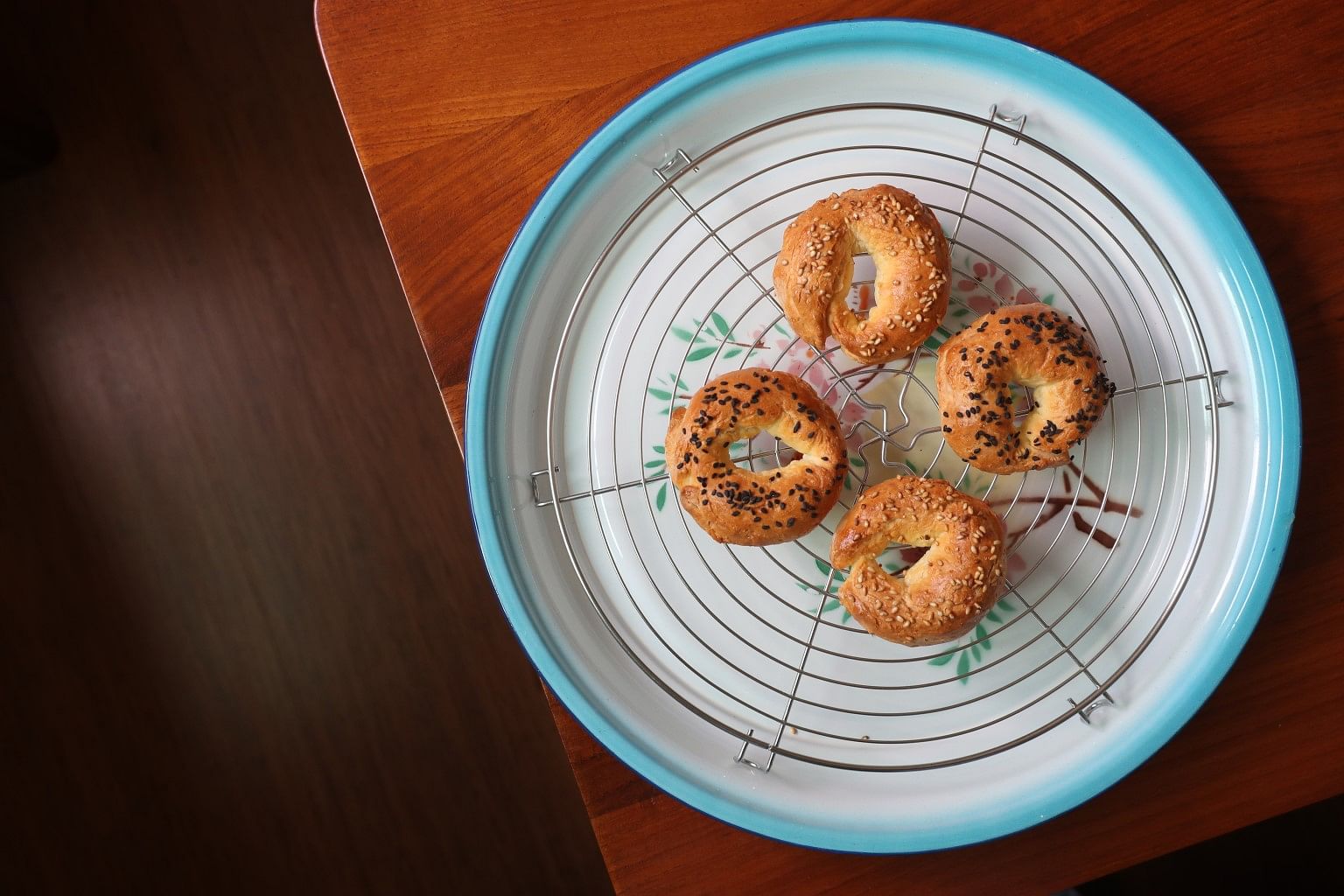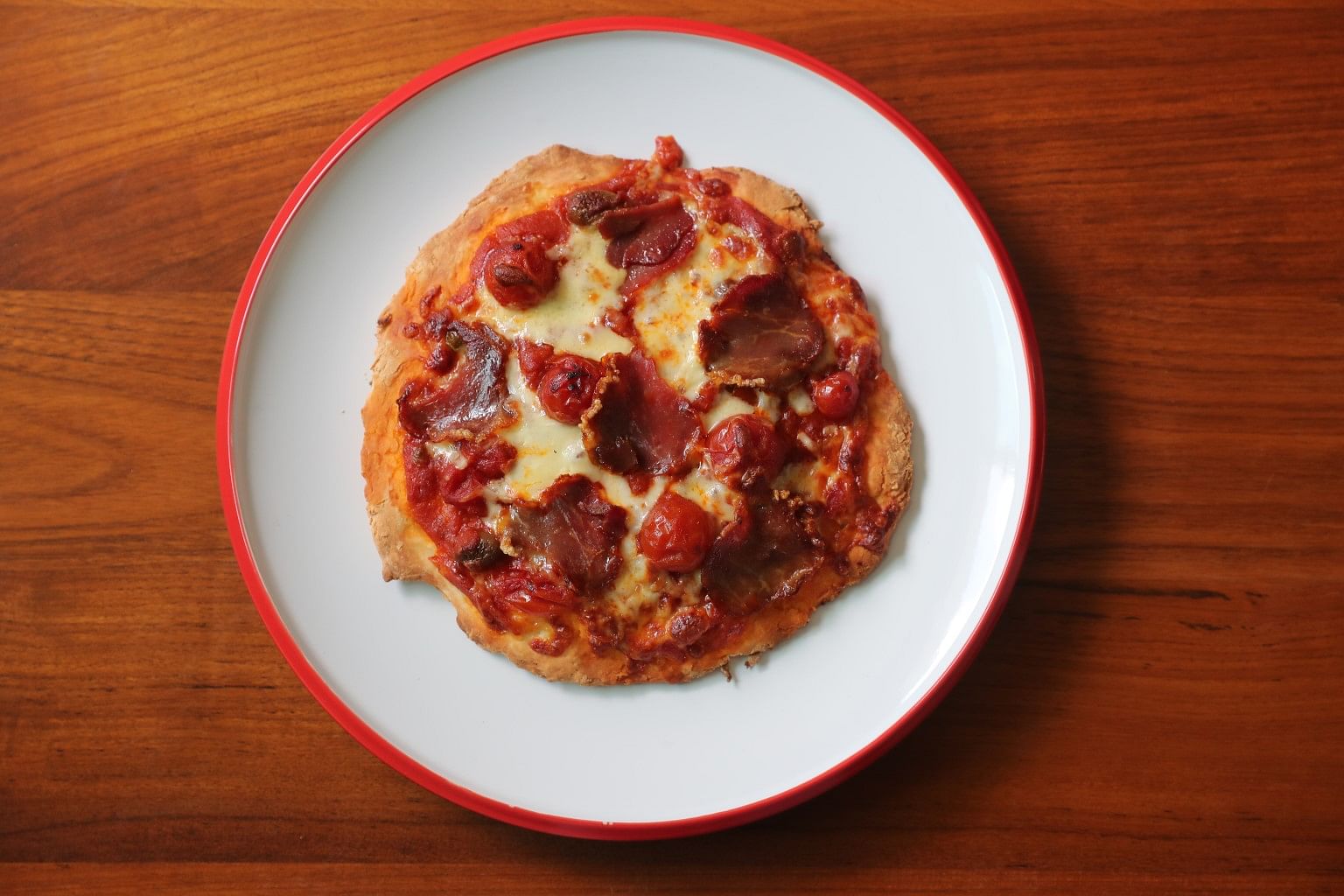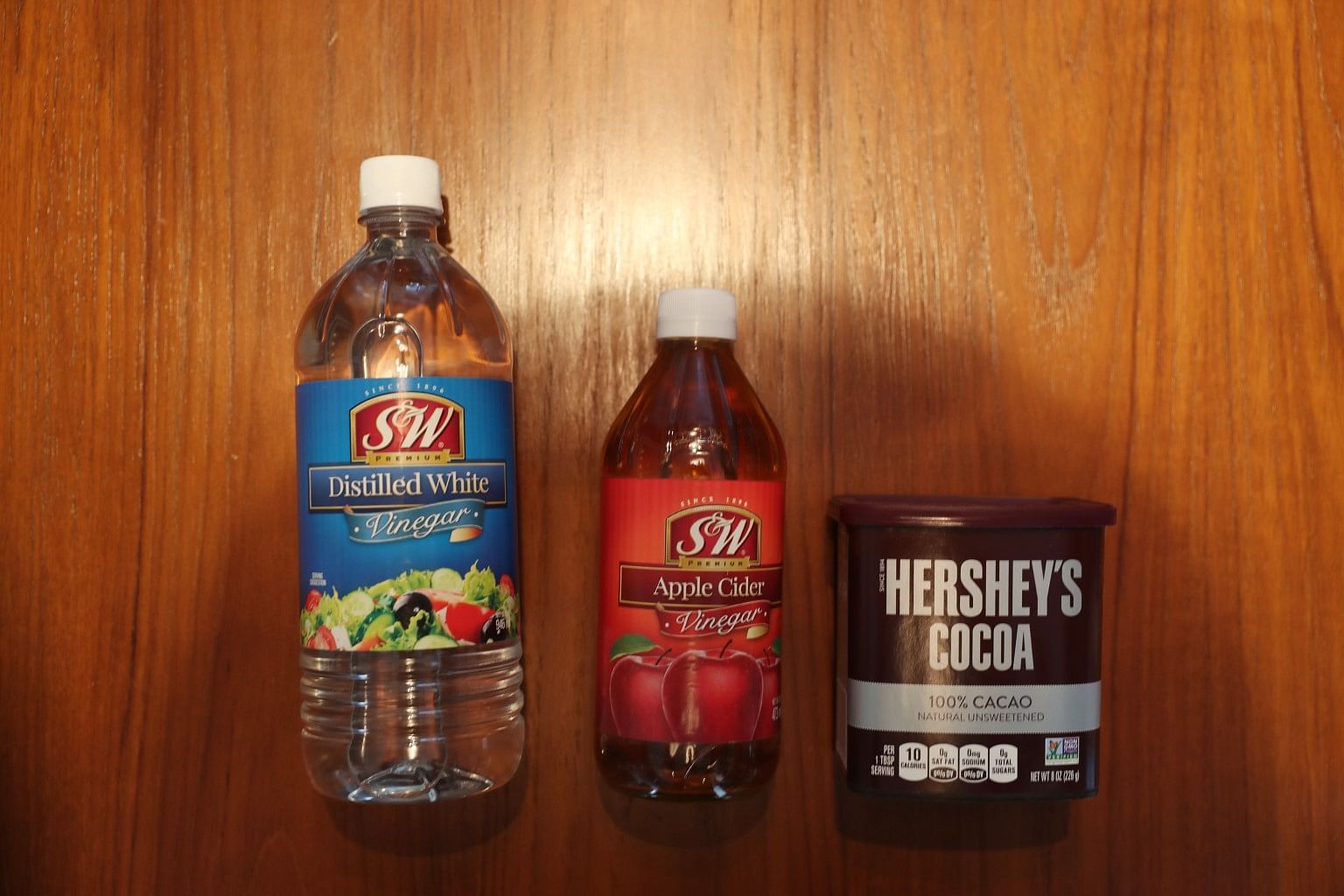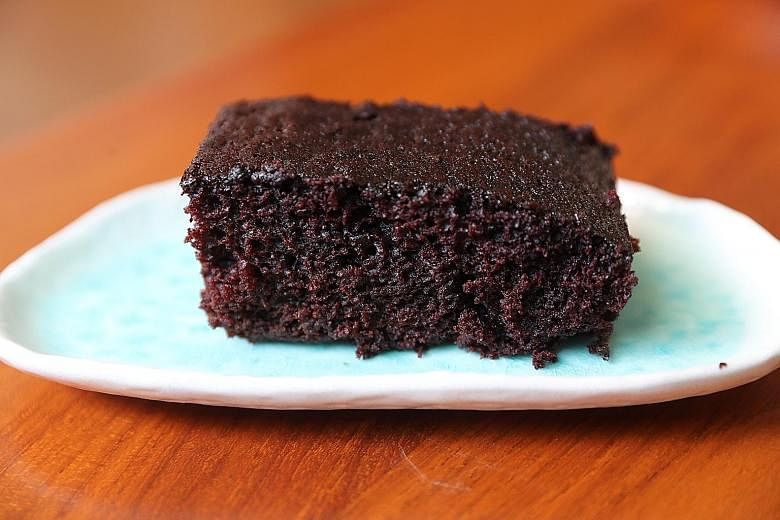The toilet paper you can sort of understand. The rice, sure. Even the instant noodles.
But plain flour is also being snapped up in supermarkets and grocery shops all over Singapore, like it is going out of style.
When the going gets tough, the tough get baking, it would seem.
This is not a phenomenon peculiar to Singapore. Food websites all around the world are extolling the virtues of from-scratch baking.
Recipes for homey banana bread, muffins and cookies of all sorts, quick and slow breads, pies filled with canned or fresh fruit, quiches and pizza dough are everywhere.
Novice bakers are taking the plunge, trying out recipes they have been told are idiot-proof. There is time, finally, to potter around in the kitchen.
More accomplished bakers are upping the ante, making sourdough starter from scratch because yeast is hard to find in stores, and attempting ever more complex recipes.
Again, there is time to nerd out over the hydration of dough, the number of hours to ferment a batch and the finer points of harvesting natural yeast.
In a bewildering world, where things change every day and without warning, following a recipe, focusing on a task rather than the coronavirus pandemic and the destruction it has wrought, is the kind of escapism that pays dividends.
The kitchen smells good, a golden brown something emerges from the oven, the kids have a treat for tea time.
The more you bake, the better you get at it, the faster it takes, the better your final results taste. Here, at least, is one thing you can be in control of.
I have been stress-baking, of course. It started in earnest when the pandemic hit, before circuit breaker month. I continue to do it because it takes my mind off the enormity of what is happening.
Currently, I am on a roll with cookies, specifically shortbread, those buttery morsels that can be flavoured with anything or nothing.
I make two or four batches of dough at a time, roll it up in tubes and stick them in the freezer. When circuit breaker month is over, I will have a stockpile ready to slice and bake when the spirit moves me.
This time alone has also given me the opportunity to try recipes I bookmarked ages ago. I have never seen a weird recipe I haven't been curious about.
So, I have chosen a chocolate cake which uses water and oil instead of eggs and butter; a flourless peanut butter cookie and a yeast-free, two-ingredient dough that can be turned into bagels, pizza, breadsticks or cheese buns. The possibilities are endless.
You will not need a fully stocked baking arsenal to make these treats.
Happy baking. If you like these recipes, write and tell me. I have more.
TWO-INGREDIENT DOUGH


This recipe comes from, of all places, Weight Watchers, and went viral in 2018. There is no need for yeast, no need to wait for the dough to rise and there are endless possibilities for the dough.
I have used it to make bagels and pizza. One portion makes four small bagels or a pizza that will serve one. I suggest doubling the recipe to make four regular-sized bagels. I rather like single-serve pizzas so each person in your family can customise his own toppings.
Self-raising flour has so far been plentiful in the supermarkets I have been to. You can use it for many British and Australian recipes; so if you see it, do not hesitate to buy a bag.
TIPS
- If you do not have self-raising flour and do not want to buy it, just add 2 tsp of baking powder and 1/3 tsp table salt to plain flour.
- To avoid having the dough become a sticky mess, drain off whatever liquid is floating in the tub of yogurt before weighing out 90g. I do not have a problem with the brand I use, but if you see that liquid, pour it off.
- When pondering what pizza or pasta sauce to buy, get one with stuff already in it. The one I use here has cherry tomatoes, capers and olives. That cuts down on toppings you need to buy.
INGREDIENTS
120g self-raising flour
90g full-fat Greek yogurt
For the bagels 1 egg
2 tsp sesame seeds
For the pizza
Tomato-based pasta or pizza sauce from a jar
Shredded mozzarella cheese
Pepperoni or other cured meat (optional)
METHOD
1. Preheat oven to 180 deg C for bagels, 250 deg C for pizza.
2. Place the flour in a mixing bowl. Make a well in the centre, add the yogurt. Use a metal spoon to mix both into a shaggy dough. Dust one hand with flour and knead the dough in the bowl, gathering all the stray bits, until they come together in a ball. Knead lightly until smooth. 3. For the bagels: Line a baking tray with baking paper or a silicone mat. Divide the dough into four equal portions, about 50g each. Lightly flour the work surface and roll each portion into a 15 to 16cm rope. Pinch the ends together. Repeat with the other three ropes. Beat the egg and brush over the bagels. Sprinkle with sesame seeds. Bake for 20 to 25 minutes until golden brown. Remove from the oven and cool completely on a rack before eating.
Makes four mini bagels. 3a. For the pizza: Line a baking tray with baking paper. Roll the dough out on the tray into a round or oval shape, about 20cm in diameter. Spread the sauce on the dough. Scatter the cheese and meat over. Bake for 12 to 15 minutes or until the cheese is melted and bubbling and the circumference of the pizza is browned.
Serves one
FLOURLESS PEANUT BUTTER COOKIES

Versions of these cookies appear everywhere on the Internet. I do not blame you for being sceptical. I was too, until I tried it out myself.
All you need is peanut butter, sugar, an egg and salt. If you like chewy cookies, this recipe is for you.
TIPS
- I have tried using natural peanut butter and no-sugar-added peanut butter and they make good cookies, although they will not spread much. Use a commercial brand to get those cracks and a larger cookie.
- Commercial brands have sugar added, making the cookies a little too sweet for me. I would cut the sugar to 125g.
- Chilling the dough for an hour makes it easier to handle.
INGREDIENTS
200g crunchy or smooth peanut butter
175g caster sugar
1/4 tsp table salt
1 60g egg
METHOD
1. Weigh out the peanut butter, sugar and salt into a bowl. Beat together with a wooden spoon or a handheld mixer. Crack the egg into the mixture and beat until it forms a dough. Cover the bowl with plastic wrap and refrigerate one hour.
2. Preheat the oven to 180 deg C. Line a baking tray with baking paper. I use the tray that comes with the oven.
3. Remove the dough from the fridge, roll into cherry tomato-sized balls. Place on the tray about 10cm apart. If your tray will not hold all the balls, put the unused dough back in the fridge. Bake the cookies for 12 minutes until golden at the edges. Cool the cookies on the tray for 10 minutes, then transfer onto a metal rack to cool completely. Let the baking tray cool completely before baking the next batch.
4. Store in an airtight container for up to three days.
Makes 18 to 20 cookies.
WACKY CHOCOLATE CAKE

No butter, no eggs? You can still make chocolate cake. This one, also known as Crazy Cake and Depression Cake, originated in The Great Depression of the 1930s and 1940s in the United States, when ingredients were scarce. Instead of butter, the recipe calls for oil. It does not require eggs or milk either, just tap water. The surprise ingredient is vinegar, either white distilled or apple cider.
The end result is a dark, glossy cake that tastes surprisingly good. The cake is springy, the chocolate flavour fairly intense.
TIPS
- Some recipes call for the ingredients to be mixedright in the baking tin. You create less of a messmixing the batter in a bowl and then pouring it into the tin.
- This cake sticks to the pan, even though I grease it with oil. So grease the tin with oil, then line it with baking paper so the paper extends over two sides. Then, it is a simple matter of loosening the cake from the sides of the pan with a palette knife and lifting it out of the pan using the paper as handles, before serving.
INGREDIENTS
80ml canola oil, plus extra for greasing the baking tin
250ml water
1 tsp vanilla extract
1 tsp white distilled vinegar (below left) or apple cider vinegar (below centre)
160g plain flour
200g caster sugar
30g unsweetened cocoa powder (below right)
3/4 tsp baking soda
3/4 tsp table salt
METHOD
1. Preheat oven to 160 deg C. Grease a 20cm x 20cm square baking tin with some canola oil.
2. Combine the 80ml of canola oil, water, vanilla extract and vinegar in a pouring jug.
3. Whisk together the flour, sugar, cocoa powder, baking soda and salt in a mixing bowl, to break up the lumps.
4. Pour the wet ingredients into the flour mixture and whisk thoroughly until it becomes a thin batter. Pour the batter into the baking pan and bake for 30 to 35 minutes or until a toothpick inserted into the middle comes out with a few moist crumbs and not chocolate sludge.
5. Set the baking tin on a metal rack and cool the cake completely. Slice and serve.
Serves six to eight


